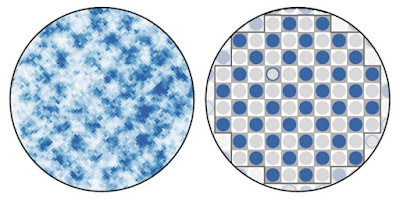New insights into a popular and potentially useful model of how electrons behave in solids have been provided by an experiment involving ultracold atoms. Markus Greiner and colleagues at Harvard University in the US studied the behaviour of lithium-6 atoms that are held in an optical lattice and interact according to rules set out by the Fermi-Hubbard model.
They found that the system becomes magnetic at low temperatures – and that the magnetism disappears when the density of atoms is reduced. The team can now use its atomic simulator to explore regimes of the Fermi-Hubbard model that could harbour very interesting physics including high-temperature superconductivity.
The electronic properties of solid materials arise from quantum-mechanical interactions between large numbers of electrons. It is notoriously difficult to calculate these properties, so physicists rely on simple models to simplify the mathematics – but even models have significant computational challenges. One such scheme is the Fermi-Hubbard model, which represents electrons as Fermi–Dirac particles (fermions) that hop between fixed sites on a lattice and only interact with each other when they occupy the same lattice site.
Physics World: Ultracold atoms shed light on the Fermi-Hubbard modelHamish Johnston

Comments